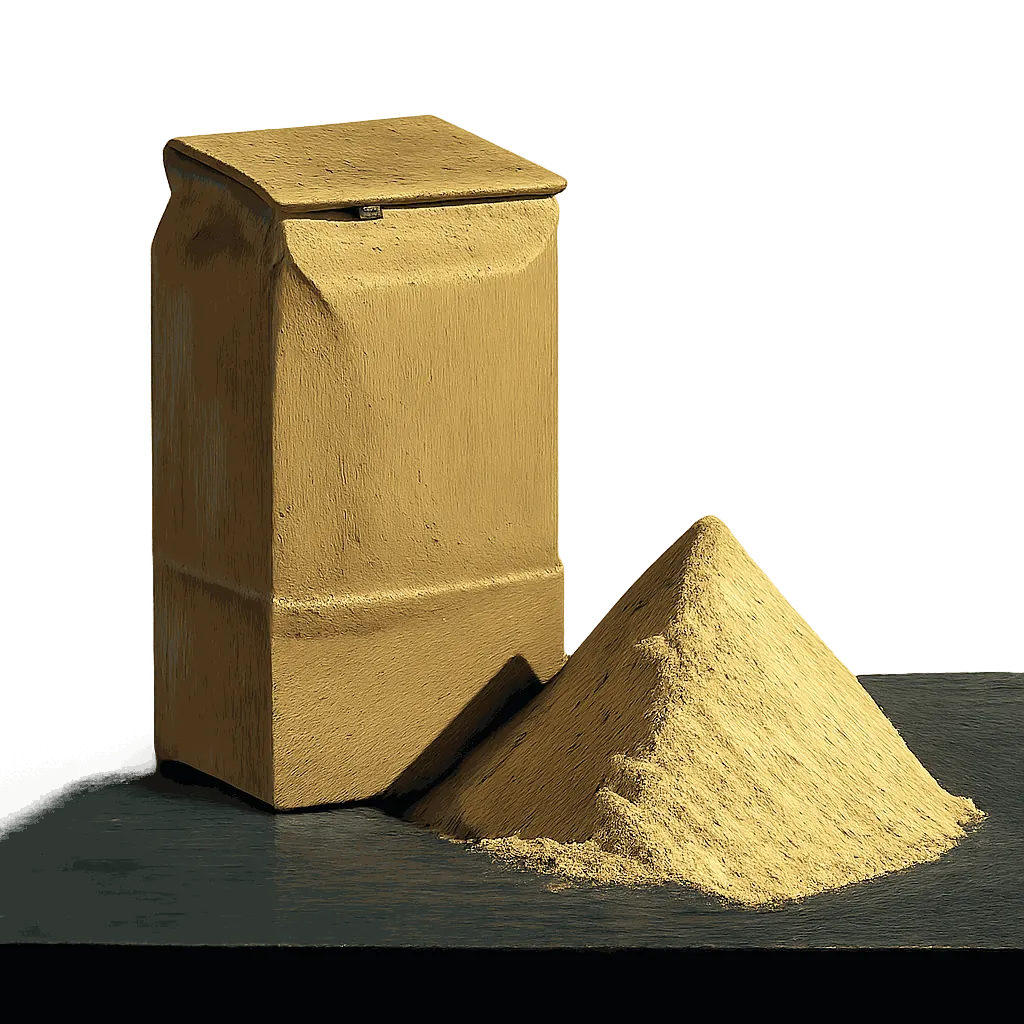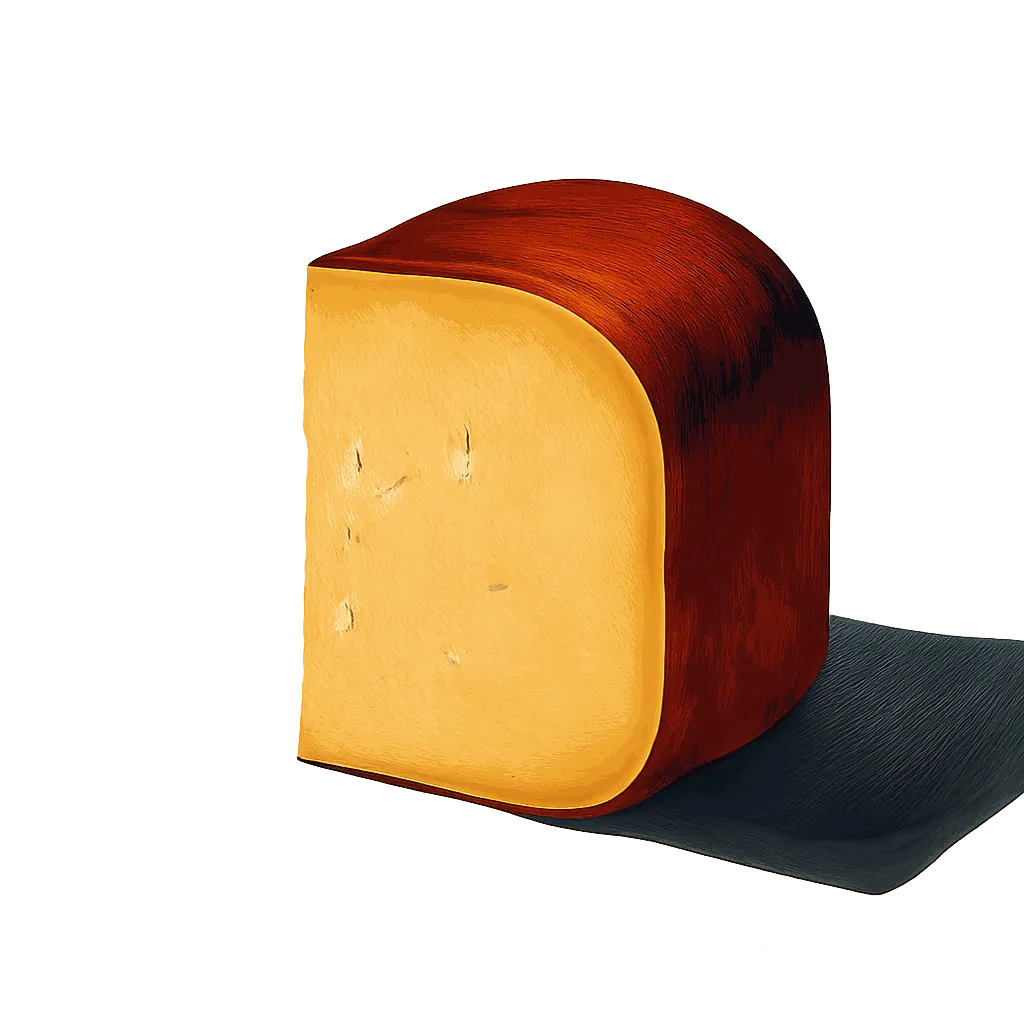Perfect Pairings & Recipes for
Graham Flour

Top flavour pairings and graham flour recipes, revealed through the hidden methmatics of flavour.
Graham flour immediately conjures the embrace of wheat and the bracing kiss of malt, woven with delicate hints of starch, caramel, and toast, giving it remarkable depth. And the true alchemy of the kitchen begins when we seek out pairings that allow these notes to truly sing, to harmonise in unexpected and delightful ways.
To illuminate these harmonies, we embarked on an ambitious journey, analysing thousands of ingredients. Each was meticulously deconstructed across 150 distinct flavour dimensions, allowing us to pinpoint precisely which notes complement in both classic and unexpected ways. Our exploration reveals, for instance, how the fatty, oily oleic acid in vegetable oil can enrich graham flour, and how buttermilk's lactic notes forge a beautiful synergy with its grainy sweetness.
Flavour Profile Of Graham Flour Across 150 Dimensions Of Flavour
Flavour wheel chart showing the dominant flavour notes of Graham flour: Wheat, Maltol, Caramel, Starch, Toasted, Molasses, Hay, Astringent, Cocoa, Honeyed, Maple, Grassy, Hazelnut, Corn
An ingredient's flavour profile is determined by its core characteristics (e.g. maillard, earthy, and vegetal) enhanced by layers of subtle aroma notes (outer bars). When pairing ingredients, aim for a mix of core traits to build balance, and select complementary aroma notes to create harmony.
The Secret Language of Flavour
To understand exactly which flavours harmonise, we compiled a database of over 50,000 ingredient pairings commonly used in cooking. We then analysed these pairings, identifying the specific flavour notes that frequently appear together.
The Flavours That Harmonise With Wheat Notes
Strength of Association Between Flavours
The flavours most associated with wheat notes are: Rosemary, Sage, Peppercorn, Lactic, Thyme, Pine, Bay leaf, Camphor, Balsam, Buttery, Oleic, Tomato, Basil, Proteolytic, Lacteal.
Our analysis reveals a strong connection between wheat and lactic acid flavours. Since graham flour has a distinct wheaty flavour, try pairing it with the lactic acid flavours of buttermilk.
The recipe below provides inspiration for pairing graham flour with buttermilk.
Harmonious Flavours Of Graham Flour
Just as our analysis showed that wheat and rosemary flavours frequently pair together, we can identify the full profile of flavours that harmonise with each of the flavour notes present in graham flour. For instance, the malty accents of graham flour are strongly associated with rooty and oleic accents.
The aroma accents linked to the various aroma accents of graham flour can be seen highlighted in the pink bars below.
Flavour Profile Of Graham Flour And Its Complementary Flavour Notes
Flavour wheel chart showing the dominant flavour notes of Graham flour: Wheat, Maltol, Caramel, Starch, Toasted, Molasses, Hay, Astringent, Cocoa, Honeyed, Maple, Grassy, Hazelnut, Corn
Matching Flavour Profiles
The flavour profile of vegetable oil offers many of the aromas complementary to graham flour, including oleic and fatty aroma accents. Because the flavour profile of vegetable oil has many of the of the features that are complementary to graham flour, they are likely to pair very well together.
Prominent Flavour Notes Of Vegetable Oil Are Represented By Longer Bars
Flavour wheel chart showing the dominant flavour notes of Vegetable oil: Oleic, Adipose, Grassy, Cucumber
The chart above shows the unique profile of vegetable oil across 150 dimensions of flavour, while the recipes below offer inspiration for bringing these flavours together with graham flour.
Linked Flavour Notes
Looking at the aroma accents that are most strongly associated with the various flavours of graham flour, we can identify other ingredients that are likely to pair well.
Graham Flour's Harmonious Flavours And Complementary Ingredients
Graham flour's Strongest Flavours
Complementary Flavours
Ingredients with Complementary Flavours
Flavour groups:
Nectarous
Acidic
Floral
Herbal
Spice
Vegetal
Maillard
Earthy
Woody
Carnal
The left side of the chart above highlights the aroma notes of graham flour, along with the complementary aromas associated with each note. While the right side shows some of the ingredients that share many of the accents complementary to graham flour.
What To Drink With Graham Flour
The rosemary notes in les baux de provence make it a perfect pairing with graham flour. Likewise, the rosemary flavours in tuscany create a match made in heaven. Explore a variety of ingredients below that beautifully complement the unique character of graham flour below.
How Flavonomics Works
We've pioneered a unique, data-driven approach to decode the intricate art of flavour pairing. Our goal is to move beyond intuition and uncover the science of why certain ingredients harmonise beautifully. This rigorous methodology allows us to provide you with insightful and reliable pairing recommendations.
Our analysis begins with over 50,000 carefully selected recipes from acclaimed chefs like Galton Blackiston, Marcello Tully, and Pierre Lambinon. This premium dataset ensures our model distils genuine culinary excellence and creativity.
Each ingredient from these recipes is deconstructed across 150 distinct flavour dimensions, creating a unique numerical "flavour fingerprint." This quantification allows us to apply advanced analytical methods to identify complex patterns between flavour notes.
We identify popular ingredient combinations that frequently appear in our recipe database. Regression analysis is then performed on these pairings to statistically validate and pinpoint truly harmonious flavours.
These insights drive our predictive model, which allows us to take any ingredient (e.g., Graham flour), analyse its detailed flavour profile, and accurately reveal its complementary flavours and perfect ingredient partners.
Explore More
Discover more ingredient profiles and expand your culinary knowledge. Each ingredient page offers detailed analysis of flavour profiles, pairing insights, and culinary applications.
The content on our analysis blog is semi-automated. All of the words were manually written by a human, but the content is updated dynamically based on the data.


